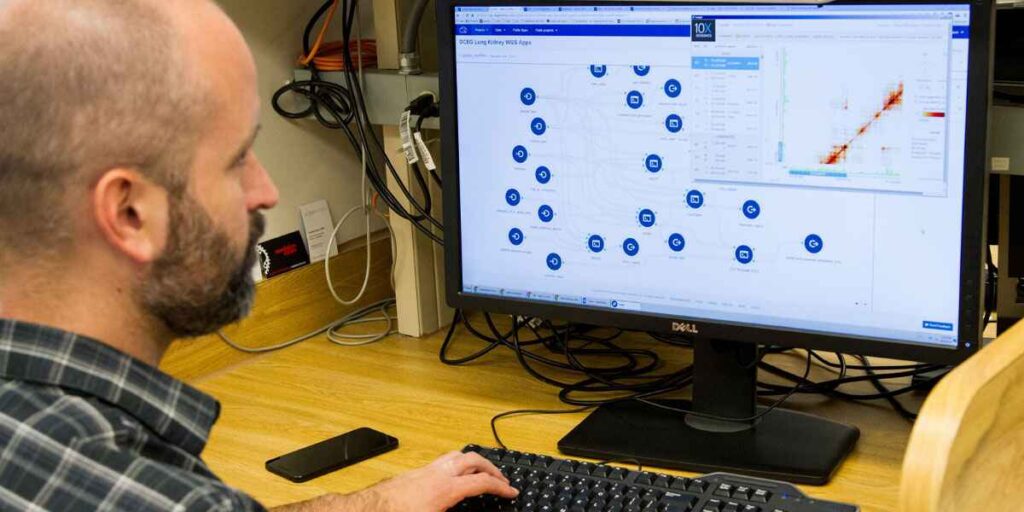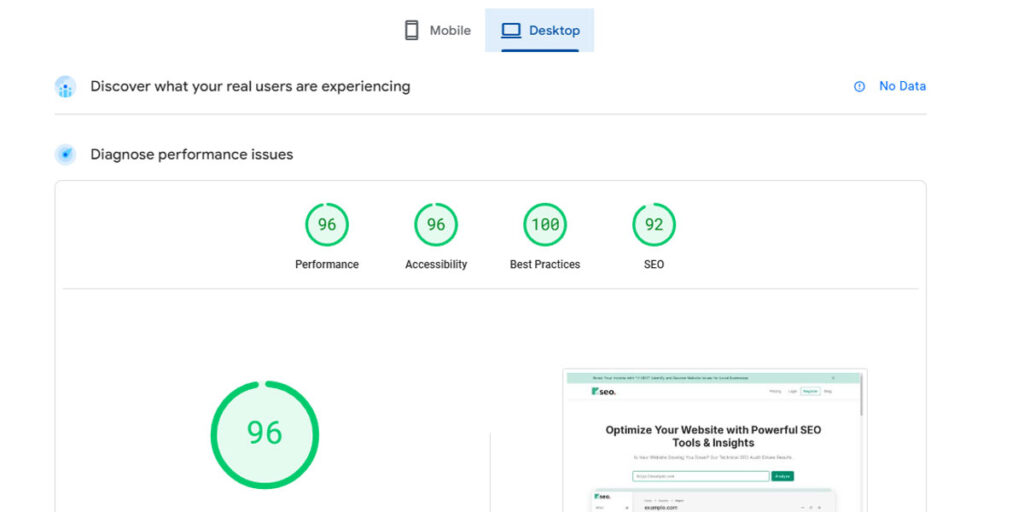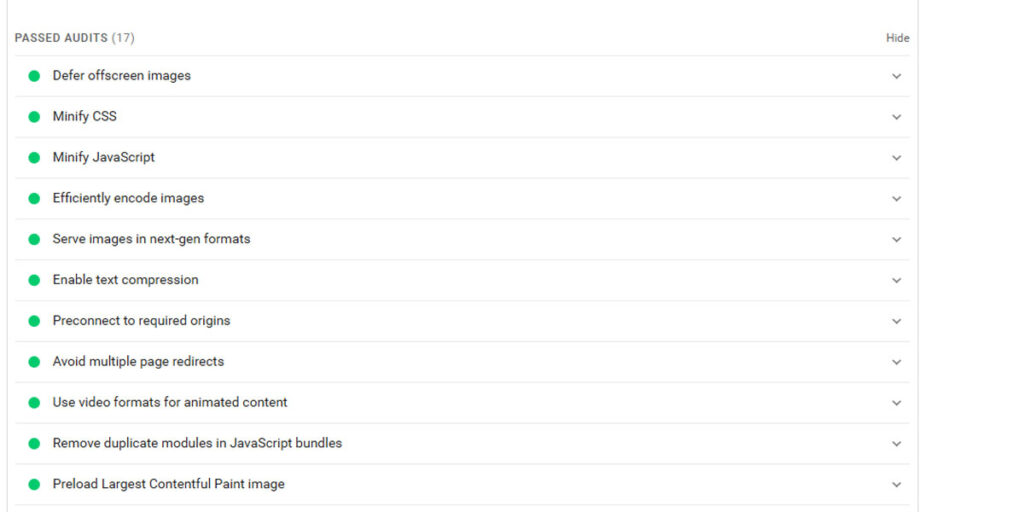Is your website feeling outdated, slow, or struggling to keep visitors engaged? In today’s fast-paced digital world, a stagnant site can be a real barrier to business growth. But don’t worry, we’re here to help you overcome this struggle.
That’s why we created this comprehensive website redesign checklist. It’s your all-in-one guide to planning, auditing, and relaunching your site the right way. From running a full website audit to refreshing content, improving design, and boosting performance, you’ll learn exactly how to transform your site into a modern, conversion-ready platform.
By the end, you’ll have a clear roadmap (plus a free downloadable checklist) to ensure your redesign not only looks great but also performs better in search engines and attracts more customers. Get ready to see your business grow with these exciting benefits!
Website Audit: Your Digital Check-Up

Before beginning any redesign, it’s essential to understand the current state of your website. A website audit serves as a health check-up for your online presence. The goal is not only to identify problems but also to highlight strengths, uncover weaknesses, and gather insights that will inform your redesign strategy.
Why a Website Audit Matters
A website audit evaluates your site’s current performance by examining its design, content, speed, and technical SEO. Without conducting an audit, you risk redesigning your site without insight, potentially overlooking critical issues that can impact traffic and conversions.

Step 1: Analyze Performance
Use Google Analytics or other tracking tools to review:
- Traffic sources (organic, paid, social, referral)
- Top-performing pages vs. high-exit pages
- Conversion paths (are your CTAs working?)
This data helps you understand what’s engaging visitors and what needs improvement.
Step 2: Check Site Speed
In today’s digital world, speed equals success. A slow site leads to higher bounce rates and lower conversions. Run your site through Google PageSpeed Insights or a website speed checker to find and fix issues with:
- Large images
- Render-blocking scripts
- Uncompressed code

Step 3: Review Your Content
Content is the heart of your website. Ask yourself:
- Is it up to date and relevant?
- Does it answer your audience’s questions?
- Are keywords naturally integrated into headings and text?
Refresh outdated pages, enhance clarity, and remove thin content that serves no purpose.
Step 4: Run an Accessibility Audit
An effective website is inclusive. Use Google Lighthouse to identify accessibility issues, such as missing alt tags or poor colour contrast. Making your site accessible not only expands your reach but also improves compliance and user experience.
Step 5: Test Mobile Responsiveness
With most users browsing on smartphones, your site must look and function well on all screen sizes. Test your website on multiple devices to confirm:
- Navigation is easy to use
- Text is legible without zooming
- Buttons and CTAs are easy to tap
The Payoff of a Website Audit
By conducting a thorough audit, you’ll gain a clear understanding of your site’s current standing. More importantly, you’ll know exactly what to prioritize during your redesign, whether that’s improving speed, rewriting content, or enhancing mobile usability. This step becomes your blueprint for a successful website redesign checklist.
👉 Run a Free Website Audit Tool
Define Your Goals: What Do You Want to Achieve?

A website redesign involves more than just aesthetic changes; it aligns your online presence with your business goals. Establishing clear, measurable objectives for the redesign will inform every design, content, and technical decision you make.
Why Goals Matter
Your website is one of your most powerful business tools. Without goals, a redesign risks becoming cosmetic. With goals, you create a site that attracts more visitors, converts better, and builds a stronger brand.
Common Website Redesign Goals
1. Boost Website Traffic
If your site struggles to attract visitors, a redesign can help. Improvements in SEO, content, and technical performance can enhance your search rankings and attract more qualified traffic.
2. Drive Conversions
More traffic means little without conversions. Strategic calls to action, optimized landing pages, and improved user journeys guide visitors toward purchases, sign-ups, or inquiries.
3. Elevate Brand Perception
Your website is often the first impression people have of your brand. A redesign can showcase your values, personality, and credibility through consistent visuals, messaging, and storytelling.
4. Enhance User Experience
A successful site is fast, intuitive, and mobile-friendly. Clear navigation, engaging content, and an accessible design make it easy for visitors to find what they need and want to return.
How to Set SMART Goals for Your Website Redesign
To make your goals actionable, use the SMART framework:
- Specific: Increase organic traffic by 30%
- Measurable: Track conversion rates in Google Analytics
- Achievable: Set realistic improvements (not “rank #1 for everything”)
- Relevant: Tie goals directly to business growth
- Time-Bound: Aim for results within 3–6 months of launch
Content Strategy: The Foundation of Your Goals

Your content drives both traffic and conversions, so it must align with your redesign goals.
Find the Right Keywords
Conduct keyword research to identify terms your audience is searching for. Use free tools like Google Keyword Planner or advanced platforms like Ahrefs and SEMrush.
Create Content That Engages
High-quality content should inform, solve problems, and motivate action. Blog posts, videos, case studies, and interactive tools can all engage visitors while supporting your SEO.
Optimize for Search Engines
Even strong content needs optimization. Use keywords naturally, write compelling meta descriptions, and structure with proper headings. This makes it easier for both readers and Google to understand your content.
Design with Purpose: User Experience is Key

Your website’s design is more than just its appearance; it’s the foundation of a strong user experience (UX). Think of it as your digital storefront. Visitors decide in seconds whether to stay, explore, or leave, based on how your site feels and functions. A strategic design strikes a balance between aesthetics, usability, and conversion.
Modern Yet Timeless Design
A clean, professional layout reflects your brand and keeps visitors engaged. While it’s tempting to chase the latest design trends, timeless principles last longer. Focus on:
- Simple, uncluttered layouts
- Consistent use of colour and typography
- Visuals that support your message
This approach ensures your site looks modern without feeling outdated within a year.
Intuitive Navigation
Confusing navigation is one of the fastest ways to lose visitors. Keep your site structure clear and logical by:
- Using simple menu labels (e.g., “Services,” “Blog,” “Contact”)
- Creating a logical page hierarchy
- Adding a visible search function
When navigation feels effortless, visitors stay longer and find what they need faster.
Strategic Calls to Action (CTAs)
A call to action guides visitors toward the next step — whether that’s making a purchase, filling out a form, or booking a consultation. To maximize conversions:
- Use short, action-oriented text (“Get Started,” “Book a Call”)
- Place CTAs in multiple spots (top, middle, bottom of page)
- Make buttons stand out with contrasting colours
Think of CTAs as signposts on your website, directing visitors toward opportunities for conversion.
Why UX-Driven Design Matters
Great design isn’t about decoration — it’s about results. When your site is easy to navigate, visually consistent, and conversion-focused, you’ll reduce bounce rates, improve engagement, and turn more visitors into customers.
Don’t Skip Testing! Ensure a Smooth Launch

You’ve put time, effort, and resources into your website redesign. The design looks great, the content is polished, and the technology is in place. But before hitting the “Go Live” button, you must run a website testing checklist. Testing ensures everything works smoothly and delivers the experience your visitors expect.
Functionality Testing
Click every link, test every form, and interact with every button. Look for:
- Broken links or 404 errors
- Non-working forms or checkout issues
- Missing redirects or error messages
Catching these issues now prevents user frustration later.
Usability Testing
A beautiful design is useless if visitors can’t navigate it. Test with real users to answer questions like:
- Can visitors find key information quickly?
- Is navigation simple and intuitive?
- Can they complete important actions (purchase, sign-up, contact)?
Compatibility Testing
Your site must perform consistently across devices and browsers. Test on:
- Chrome, Firefox, Safari, Edge
- Desktop, laptop, tablet, smartphone
This ensures that all visitors see the same experience, regardless of how they access your site.
Launch and Monitor: The Journey Continues

Launching your website isn’t the end; it’s the beginning of ongoing optimization. Treat your site as a living asset that requires regular maintenance and attention.
Track Your Progress
Use tools like Google Analytics to monitor:
- Traffic growth
- Bounce and conversion rates
- Top-performing pages
This gives you a clear “report card” for your site.
Gather User Feedback
Encourage visitors to share their experience through:
- On-site surveys
- Customer reviews
- Social media feedback
Real user insights show what’s working and what needs improvement.
Make Ongoing Adjustments
The digital world moves fast. Keep your website updated by:
- Refreshing content regularly
- Optimizing CTAs and forms
- Improving performance and security as technology evolves
A successful redesign isn’t a one-time project; it’s an ongoing process.
Final Thoughts
Your website is your online hub and a key driver of business success. By following this website redesign checklist, you can launch a site that looks great, performs well, and grows with your business.
Suggested FAQ Section
How often should I redesign my website?
Most businesses benefit from a redesign every 2–3 years. Technology, design trends, and user expectations change quickly, so updating your site regularly helps you stay competitive and maintain strong SEO performance.
How long does a website redesign take?
A typical website redesign typically takes 6–12 weeks, depending on the site’s size and complexity. Smaller sites may be ready faster, while larger projects with custom features may take longer.
Does a website redesign affect SEO?
Yes, a redesign can affect SEO in both positive and negative ways. If executed properly with appropriate redirects, enhanced performance, and better content, it can improve rankings. However, if important URLs or content are lost during the process, it can harm SEO. It is essential to conduct an SEO audit both before and after the launch.
How much does a website redesign cost?
The cost of a redesign depends on factors like site size, functionality, and design requirements. A small business site may cost a few thousand dollars, while larger, feature-rich projects can be much higher. At If Media, we offer affordable packages tailored to business needs.







